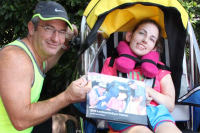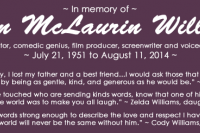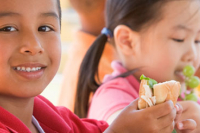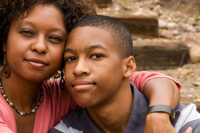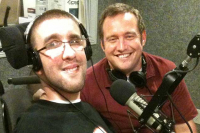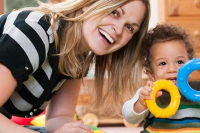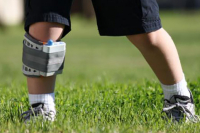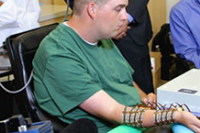Turning 50 is a turning point for many; a time to reflect, collect and plan for the future. For Dr. Brian McElyea, it was an epiphany. With health concerns surfacing, he began to think about how to prepare for not only his future, but his ability to care for his then 19-year-old daughter Brienna’s future care.
“Brienna is a unique combination as she is severely physically impaired, but is age typical in her cognitive ability,” states Jill McElyea of her daughter’s condition that was diagnosed when Brienna was six months old.
Simply, Brian decided on two...
Read MoreThe “100 Cameras Project” is on a mission. From the team that brought you “Project This,” a program featured in the award-winning documentary “Shooting Beauty” comes the opportunity to equip 100 individuals who have an intellectual or developmental disability with an accessible camera and a mission to focus on their picture voice.
For participants, the nationwide initiative provides “a life-changing opportunity to explore an art-form that for many, up until this...
Read MoreA “comedic Mother Teresa” is what Garry Kravit, uncle to David Buist who was diagnosed with a rare and aggressive form of cancer, labeled Robin Williams. Kravit met Williams at an event and asked Williams if he would autograph a few items to raffle off at a fundraiser for a new Ronald McDonald House. Not only did Williams oblige, he would periodically call David throughout his treatment and recovery to cheer him on.
“He was a good person. He really tried to make people feel better,” says David, who is now in remission and married with children. “There is nothing...
Read MoreDid you know your child with Cerebral Palsy may be eligible for the School Nutrition Program? Typically, the United States Department of Agriculture’s Food and Nutrition Services funds five school nutrition programs targeted toward assisting school-aged children that come from families experiencing financial hardship. While not all children with physical disabilities come from homes with financial strain, there are other stipulations in the Individuals with Disabilities Education Act, or IDEA, that may qualify your child for these programs..
School nutrition...
Read MoreTeaching your child with a disability about puberty has been made a bit easier with the aid of The Healthy Bodies Toolkit, complements of Vanderbilt Kennedy Center for Excellence in Disabilities. The video and visuals – one for boys and one for girls – are available online for parents to view and download. The kits encourage parents to talk about upcoming body changes with their children and prepare them to gracefully progress through the lifecycle.
The toolkits offer ways to discuss aspects of hygiene and body changes, identify private and public body parts and...
Read MoreHave you ever wondered how to dispel notions that a person with Cerebral Palsy is somehow different than a person that doesn’t have the condition? That’s the focus of 71-minute show called, Handicap This! Friends and associates, Mike Berkson (the friend with Cerebral Palsy) and Tim Wambach (the friend without) are on a cross-country journey to explore the serious issues – punctuated by the comical ones – that occur when one buddy has Cerebral Palsy. In doing so, they peel away at the layers of preconceived – and sometimes ill-conceived – notions about disability.
... Read MoreTake advantage of your child’s “windows of motor development opportunity,” urge Carl Gabbard, Ed.D., and Luis Rodriques in an Early Childhood NEWS article entitled “Optimizing Early brain and Motor Development Through Movement.” This window of opportunity begins in the prenatal period and advances to the age of five. It is believed this timeframe is a critical period in which physical activity lays the foundation for not only motor control, but for early childhood development such as learning and behavior. In fact, behavioral functions are said to narrow considerably...
Read MoreConnor Chaney, 8, is on a mission – to take his new “magic foot,” a neurological rehabilitation device which uses sensor technology similar to the Wii video gaming system, to school with him. For Connor, the device would replace what he feels is an uncomfortable and restrictive plastic ankle brace.
“It’s a beautiful thing for a physical therapist to see,” said Lindsay Luker, physical therapist at Cook Children’s Medical Center in Texas, according to a WFAA Channel 8 ABC news report. “You’re helping his body move the way it’s designed to move.”
The “magic...
Read MoreImagine being paralyzed from the chest down and being asked to be the first person to test Neurobridge, a technology that would allow you to move your hand with only the power of thought. This became a reality for Ian Burkhart, 23, paralyzed from the chest down from a swimming accident nearly four years ago.
Dr. Ali Rezai, a neurosurgeon from Ohio State University Wexner Medical Center, implanted a pea-sized sensor chip into the motor cortex region of Ian’s brain. After months of preparation, Ian’s brain activity – namely his wishful intentions to move his...
Read MoreNutrition is important for every child, particularly for a child with Cerebral Palsy. Getting your child the proper food and vitamins, every day, can be important for helping with growth and impacting your child’s development. With that said, we have several Cerebral Palsy nutrition factors for our families to consider that can help highlight the importance of proper diet as well as give paths for success to parents.
First, Cerebral Palsy nutrition should be determined not by a list of...
Read More

